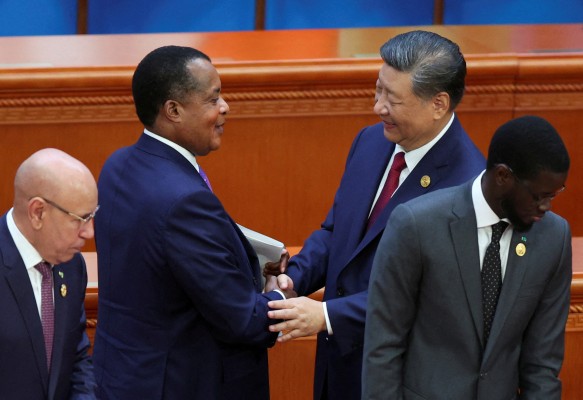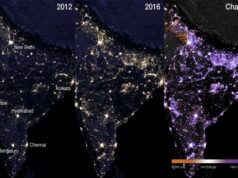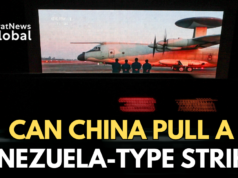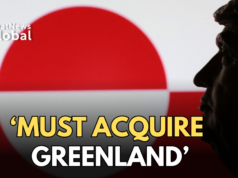
China’s engagement with West Asia and North Africa is undergoing a significant transformation—one that is no longer confined to oil shipments or infrastructure projects.
A May 2025 research paper by the International Institute for Strategic Studies (IISS) reveals a marked evolution in Beijing’s regional strategy, driven by a mix of domestic imperatives, global ambitions, and a calculated effort to present itself as a stabilising alternative to the West.
The IISS report describes how China has moved from a narrowly transactional, state-to-state economic approach to what it terms a “bilateral-plus-multilateral” model. In this new phase, China is embedding itself not just as an investor or energy customer but as a diplomatic and, increasingly, a security actor. This deliberate, systemic expansion is rooted in Beijing’s long-term vision of national rejuvenation and global influence.
At the heart of China’s strategy are four interlinked drivers.
First, the need to preserve internal political stability and maintain steady economic growth.
The region is indispensable to China’s energy security: nearly half of its crude oil comes from there, and its dependence on external energy sources is projected to deepen in the coming decades. Chinese investments in regional energy infrastructure, from Iraqi oil fields to pipelines in Algeria, are geared not only toward diversifying sources but also ensuring long-term supply chains in a volatile world.
Second, Beijing’s desire to reshape the global order is evident in its push for a multipolar system that dilutes American and Western dominance. Through mechanisms like the Belt and Road Initiative (BRI), the Global Development Initiative (GDI), and the Global Security Initiative (GSI), China is offering alternative platforms for development and diplomacy—ones that promote its own norms of sovereignty, non-interference, and regime stability.
These ideas resonate across a region long fatigued by U.S.-led interventions and Western lectures on democracy and human rights.
As the IISS notes, China’s third driver—its aspiration to lead the Global South morally and politically—is bearing fruit. By portraying itself as a neutral, non-judgmental actor, Beijing has positioned itself as an attractive partner for governments facing internal dissent, economic distress, or strained relations with the West.
The language of “win-win cooperation” and “civilisational respect” allows China to engage with countries like Iran, Egypt, Saudi Arabia, and the UAE without triggering the ideological anxieties that often accompany Western partnerships.
The fourth pillar of Beijing’s approach is the projection of the so-called “China model” as a viable alternative to Western liberalism. High-level summits, such as the China–Arab States Summit and forums like the China–Arab States Cooperation Forum, showcase China not only as a development financier but as a role model for governance and technological advancement. Its model—centralised authority coupled with digital surveillance, economic growth, and limited civil liberties—is being watched closely by many authoritarian regimes in the region.
But this soft power and economic footprint are now being accompanied by harder instruments of statecraft. While China continues to eschew formal alliances or permanent military bases, its involvement in the region’s security sphere is no longer peripheral.
The IISS report highlights growing defence-industrial cooperation—ranging from drone sales and licensed production to maintenance agreements and arms transfers. Chinese-made UAVs have been sold to countries like Iraq, Saudi Arabia, and the UAE. Joint ventures with Emirati firms like GAL for aircraft servicing indicate a more sustained presence.
At the same time, proliferation concerns are rising. Chinese-origin components have been found in Houthi missiles and drones used against Gulf targets. While Beijing insists on end-user agreements and denies responsibility for misuse, the IISS notes that China’s growing role as a defence supplier may soon force it to reckon with the political fallout of its arms exports—especially in proxy-ridden conflicts like Yemen.
Looking ahead, the IISS report explores four possible trajectories for China’s strategy in the region up to 2040.
The most optimistic is the “Xi (Re)Thought” scenario, where China continues to deepen its economic and diplomatic engagement while keeping security involvement at arm’s length.
A second, more ambitious path—“The Middle (East) Kingdom”—envisions Beijing emerging as a central player in both economic and military domains, rivalling traditional Western influence.
The other two scenarios are more adverse: “Stumbling China” foresees a retrenchment due to domestic or international setbacks, while “From the Barrel of a Gun” imagines a region so volatile that China is drawn into heavier security commitments, possibly even conflict mediation.
Of these, the report suggests “Xi (Re)Thought” is the most likely. It aligns with Beijing’s historical caution in military matters and its preference for influence without entanglement. However, even this balanced approach carries risks. As Chinese stakes in the region grow, so will regional expectations—from providing diplomatic support in crises to protecting Chinese nationals and assets on the ground. The contradiction between China’s official posture of neutrality and its expanding strategic footprint may become harder to sustain.
Moreover, the evolving U.S.–China rivalry casts a long shadow. While Washington remains the dominant security actor in the region, its gradual pivot to Asia has created space that China is quietly filling. Yet Beijing is still careful not to directly challenge American military primacy.
The IISS points out that China prefers asymmetric tools: infrastructure, finance, technology, and information warfare. Whether these will suffice to make China a true strategic counterweight remains an open question.
What is clear, however, is that the old narrative of China as a passive, economically motivated actor in MENA is no longer valid. The region now matters to Beijing not just as a supplier of oil, but as a theatre where its vision for global leadership, diplomatic alignment, and ideological competition is being tested.
As China navigates the next phase of its ascent, its decisions in the Middle East and North Africa will be closely watched—not just in Riyadh and Tehran, but in Washington, Brussels, and New Delhi.
In a career spanning three decades and counting, Ramananda (Ram to his friends) has been the foreign editor of The Telegraph, Outlook Magazine and the New Indian Express. He helped set up rediff.com’s editorial operations in San Jose and New York, helmed sify.com, and was the founder editor of India.com.
His work has featured in national and international publications like the Al Jazeera Centre for Studies, Global Times and Ashahi Shimbun. But his one constant over all these years, he says, has been the attempt to understand rising India’s place in the world.
He can rustle up a mean salad, his oil-less pepper chicken is to die for, and all it takes is some beer and rhythm and blues to rock his soul.
Talk to him about foreign and strategic affairs, media, South Asia, China, and of course India.




